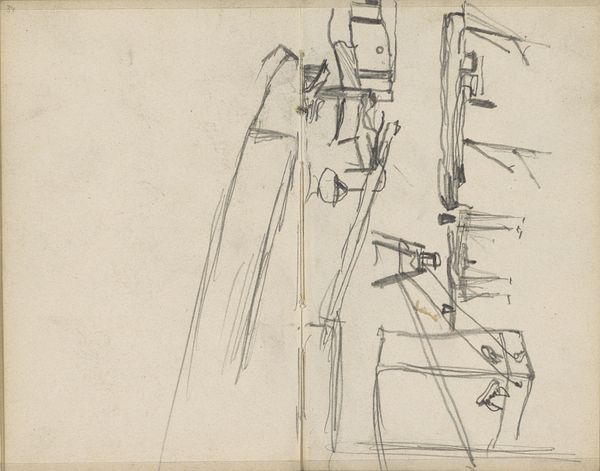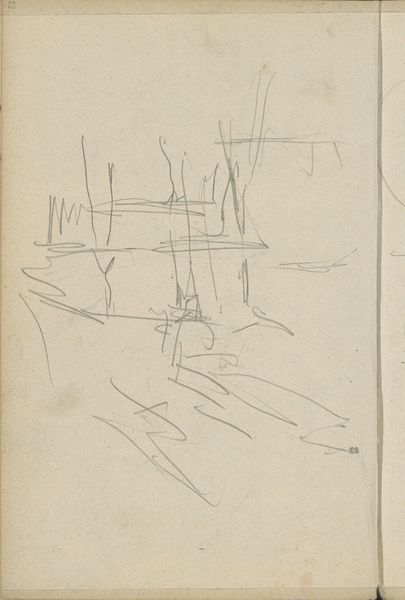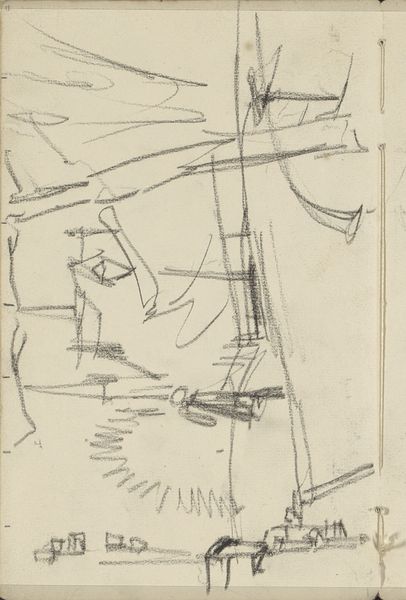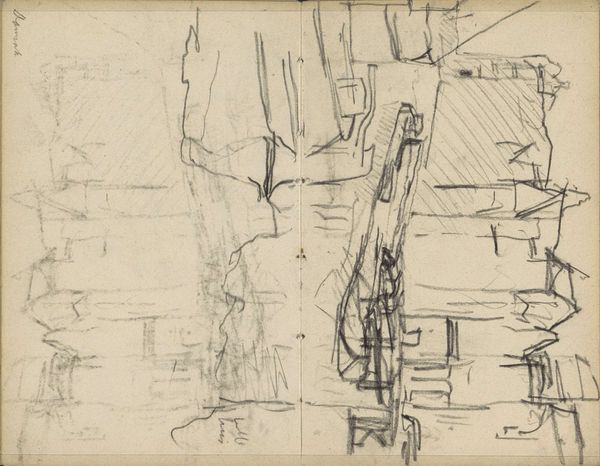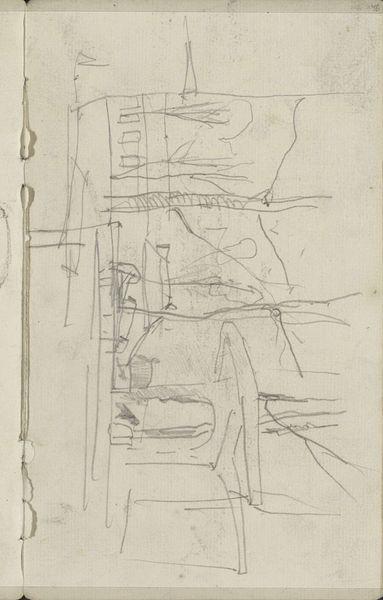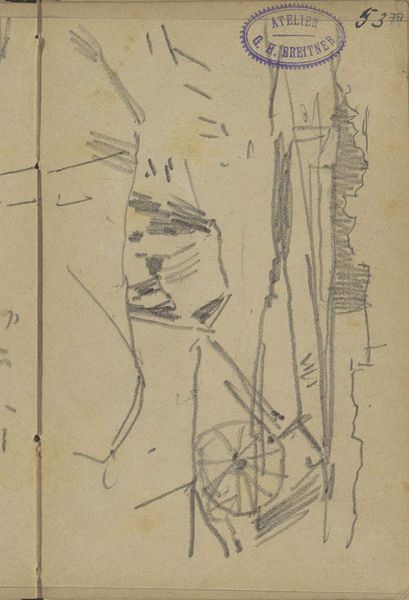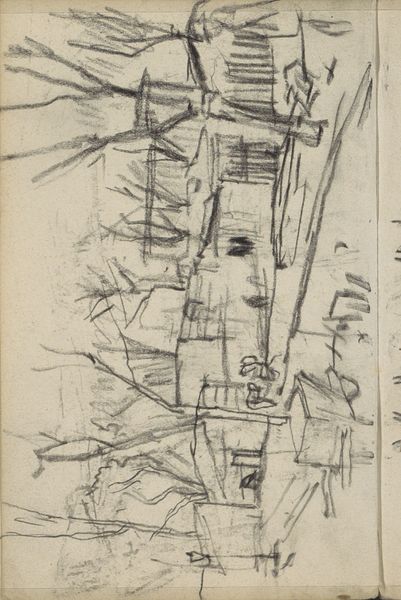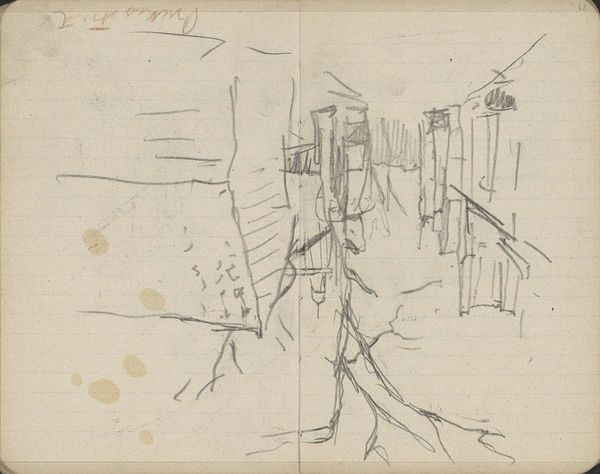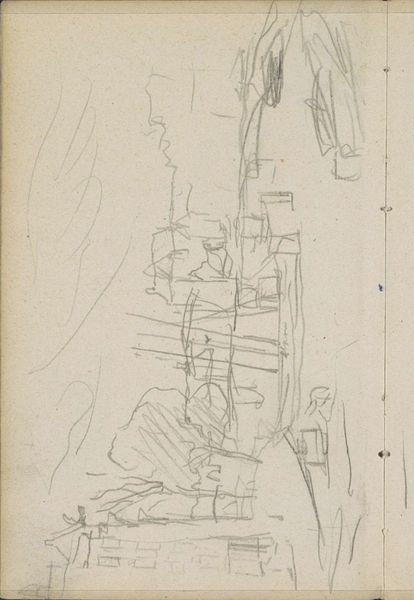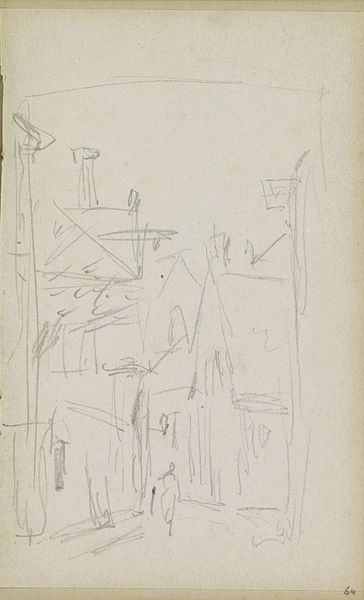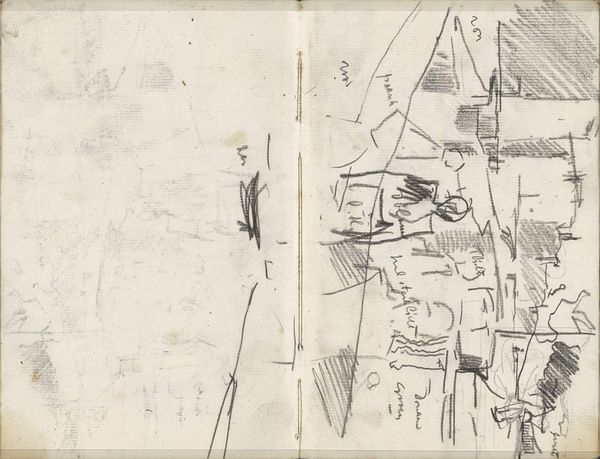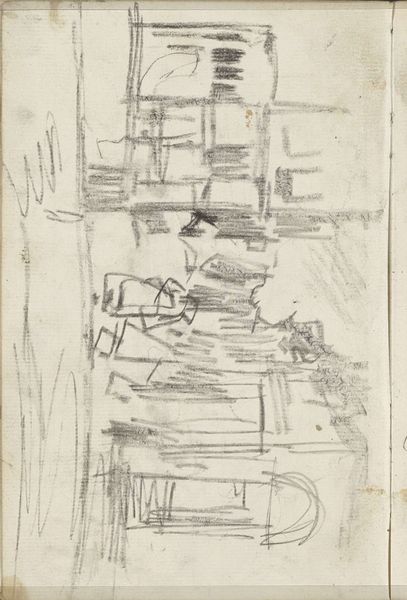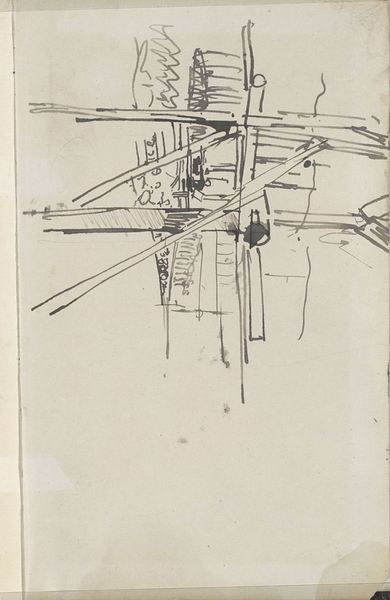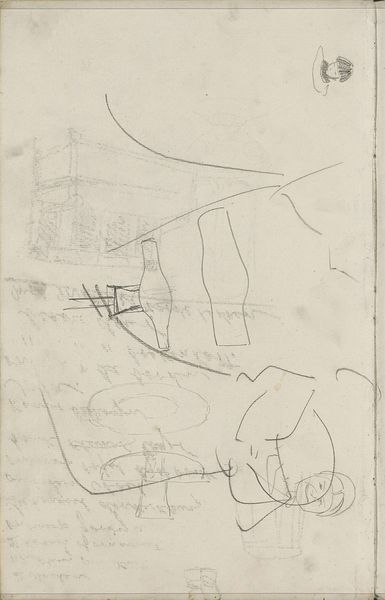
Huizen met tuitgevels aan het Begijnhof in Amsterdam, gezien vanaf het Spui c. 1900 - 1923
0:00
0:00
Copyright: Rijks Museum: Open Domain
Editor: This is a pencil drawing by George Hendrik Breitner, titled "Houses with Gable Fronts on the Begijnhof in Amsterdam, Seen from the Spui," dating from around 1900 to 1923. The sketchiness creates a feeling of movement, of capturing a fleeting moment. How do you interpret this work? Curator: The Begijnhof! It resonates with a collective memory. Notice how Breitner uses the pencil to capture the *essence* of the gabled houses, almost like shorthand. These gables themselves act as cultural glyphs – markers of Dutch identity and civic pride, passed down through generations. They symbolize domesticity and lineage. Editor: So the gables aren't just architectural details, but hold deeper symbolic meaning? Curator: Precisely! Think of the gable as a face presented to the world, revealing clues to the occupants' history. The looseness suggests transience, the ever-changing face of the city, yet these archetypal shapes endure, evoking permanence and familiarity within that flux. What feelings does that contrast evoke in you? Editor: It makes me think about how cities evolve, some things change drastically, and others become timeless. Are the light and shadow important here too? Curator: Light certainly plays a role, hinting at time and atmosphere. The *lack* of sharp lines and detail is striking. The absence becomes a powerful signifier – forcing us to engage our own memories, our own experiences, to complete the image. It evokes a ghost, a half-remembered space. Editor: It's interesting how the incompleteness makes it more evocative, prompting viewers to fill in the gaps. I didn't think a sketch could be so rich in symbolism. Curator: Indeed. It is not simply a record but an echo. By reducing these houses to fundamental shapes, Breitner emphasizes their enduring symbolic power in the collective imagination. What remains isn't just architecture, it's the spirit of place. Editor: Thank you, I see how those cultural echoes resonate through time now, made all the more present through what the artist chose to omit from the image.
Comments
No comments
Be the first to comment and join the conversation on the ultimate creative platform.
